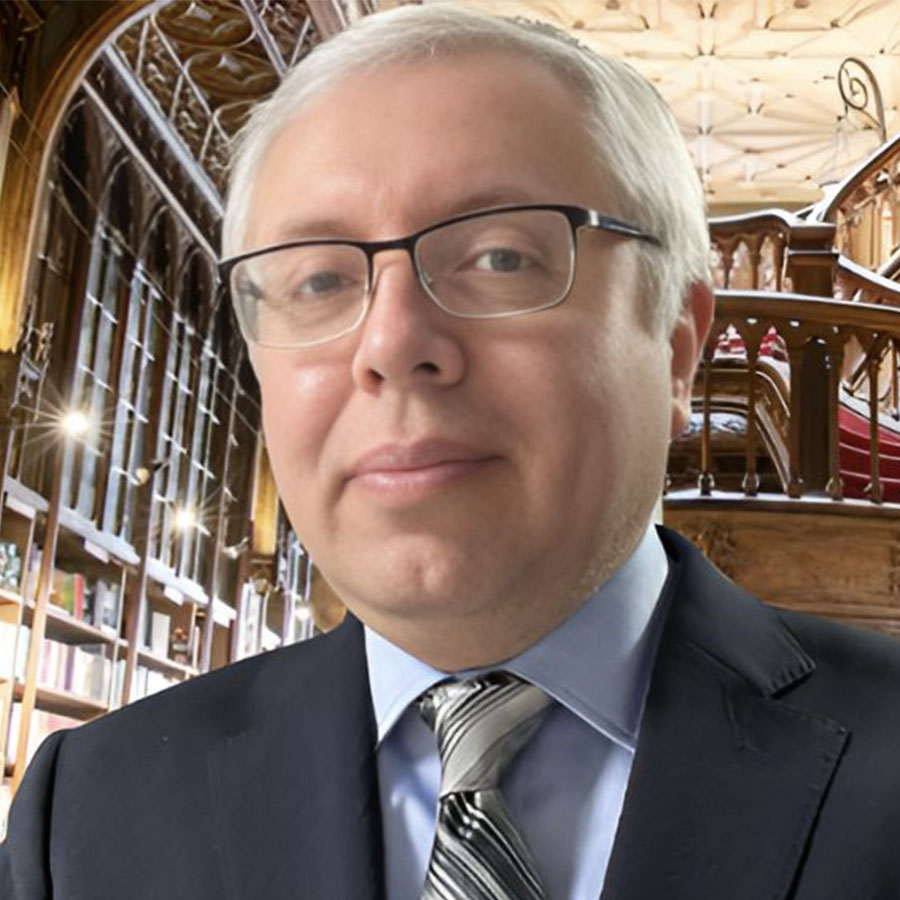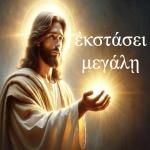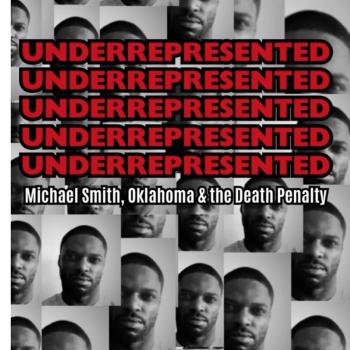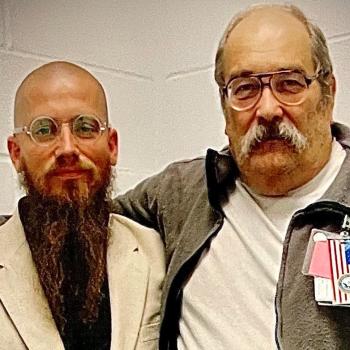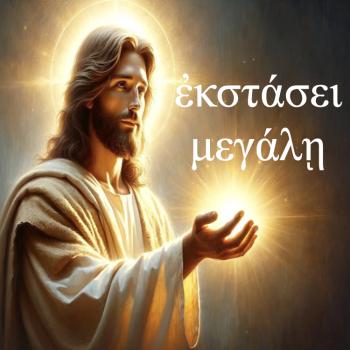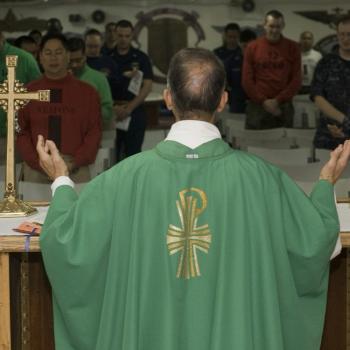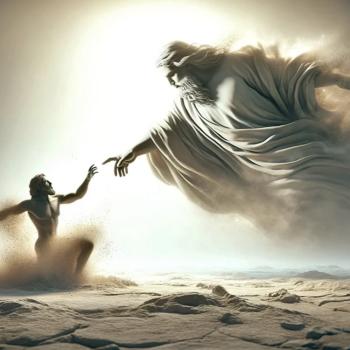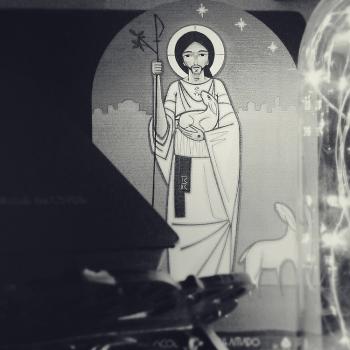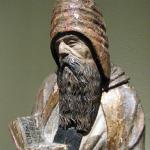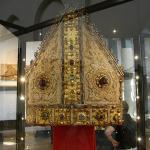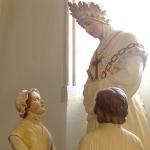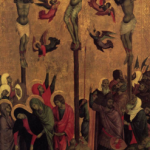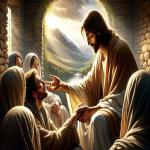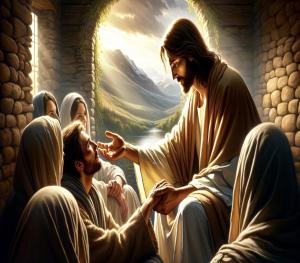
After having listened on recent Sundays to different accounts of portentous deeds by Jesus, culminating on the most-impressive revival of Jairus’ daughter, in the Gospel reading on the 14th Sunday in Ordinary Time we find Jesus back in Nazareth, unable to perform a single miracle due to the lack of faith of those of his own home [Mk 6:1-6].
As a rabbi, he preaches in the synagogue on sabbath. The crowd who listens to his words, is astonished, even offended. They simply refuse to accept that such a wisdom can come from the mouth of the “carpenter” they know, who is the son of Mary.
It is noteworthy that Joseph is not mentioned. It could be that the upset crowd didn’t mention his name because he was already dead by then. Or it could be that the Evangelist omits Joseph’s name to make the point that Jesus is the Son of God, and not of his putative father. This is an important Christological idea for Mark. We must not forget how he begins his book:
Beginning of the gospel of Jesus Christ, Son of God [1:1].
Was Jesus a carpenter?
The translation of the gospel refers of Jesus as a carpenter. We have to bear in mind that the readings in the Lectionary and the Book of Gospels have to be translated, as a liturgical norm, from the Latin text of the Neo Vulgata. If we dig deeper into the text, we have to get to the original in Greek.
οὐχ οὗτός ἐστιν ὁ τέκτων,
isn’t he the artisan?
τέκτων (tekton) means artisan, mason and builder, while carpenter corresponds to ξυλουργός or to its synonym, μαραγκός. If Jesus was a τέκτων, an office he learned from Joseph, then he did a lot more than only working with wood.
Did the Virgin Mary have other children?
But there is something even more important to understand in this pericope. The crowd is unwilling to accept the words of Jesus, who is —according to the common English translation of this pericope—, “the brother of James and Joses and Judas and Simon” [v. 3b] and “his sisters” were there with them [v. 3c].
Because of this translation of this verse, Protestant churches affirm that Mary had more children than Jesus. Yet, it is a dogma of faith in the Catholic Church that Mary is always a virgin: before, during and after the birth of Jesus.
From the earliest faith formulations the Church has confessed that Jesus was conceived solely by the power of the Holy Spirit in the womb of the Virgin Mary, without human seed. The deepening of faith in the virginal motherhood led the Church to confess Mary’s real and perpetual virginity even in the act of giving birth to the Son of God made man [Cf. DS 291; 294; 427; 442; 503; 571; 1880]. The liturgy of the Church celebrates Mary as Aειπαρθενος (Aeiparthenos), the “Ever-virgin.” [CCC 499; Cf. LG 52].
Looking at the Greek text of verse 3b-c in Mk 6, we read:
…καὶ ἀδελφὸς Ἰακώβου καὶ Ἰωσῆτος καὶ Ἰούδα καὶ Σίμωνος;
καὶ οὐκ εἰσὶν αἱ ἀδελφαὶ αὐτοῦ ὧδε πρὸς ἡμᾶς;
…and the relative of James and Joses and Judas and Simon?
And are not his female relatives here with us?”
The key word here is ἀδελφὸς (adelphos) — ἀδελφαὶ (adelphe) is the feminine in plural. This noun means “relative”, which includes brothers, sisters, cousins, aunts, nephews, grandchildren and grandparents. There is a word derived from ἀδελφὸς, αδελφοτης (adelphotees) which refers to a religious fraternity.
Therefore, the reference to these relatives does not necessarily make them Jesus’ biological brothers or sisters
In the fifth century, St. Augustine explained,
With the term “brothers” Jews usually designate their relatives, which can be verified not only among relatives with the same degree of affinity, such as the children of brothers and sisters —whom we also very often call “brothers”— but even the uncle and son of their sister, as Jacob and Laban were among themselves. All of these used to be called “brothers”. Let us not be surprised, then, that they called “brothers” to everyone related to his (Jesus’) mother’s lineage [17 Questions About the Gospel According to Matthew, n. 16].
In fact, Matthew, in his Gospel, specifies who these “brothers”, or relatives, rather, of Jesus, are sons of. In his account of the crucifixion, he mentions:
“Among them were Mary Magdalene, Mary the mother of James and Joses, and the mother of the sons of Zebedee” [Mt 27:56].
As we see, James and Joses were actually sons of a different Mary. We know from John’s account of the crucifixion that this other Mary was the wife of Clopas [Jn 19:25].
Jesus’ reaction to the unbelief of his people
Back to the episode in Galilee, we see Jesus is unable to perform any mighty deed in there, due to the lack of faith of all these people. He resolves,
“A prophet is not without honor except in his native place and among his own kin and in his own house” [Mk 6:4].
We cannot disregard the conclusion of this episode. Marveled because of their unbelief, he leaves them and goes to teach at other villages [v. 6].
Their lack of faith is not going to stop his mission. Jesus will propose his message of salvation, but will not try to convince anyone about it. He will not negotiate with the truth, and he will never impose it either.
Being himself the Truth, the Logos of the Father, Jesus will never impose his message to anyone. It is up to those who listen to him, and that includes us as well, to accept his message or to distrust him and refuse to embrace his message. But if we chose to distrust him, Jesus will just move on and go to talk to the ones who are willing to listen.
Let us ask in prayer that Jesus grants us the grace to never become ourselves an obstacle to his plan, but rather, collaborators of his salvific mission.
________________
Abbreviations
CCC – Catechism of the Catholic Church
DS – Enchiridion Symbolorum, Definitionum et Declarationum de Rebus Fidei et Morum
LG – Dogmatic Constitution Lumen Gentium
Jn – Gospel According to John
Mk – Gospel According to Mark
Mt – Gospel According to Matthew


